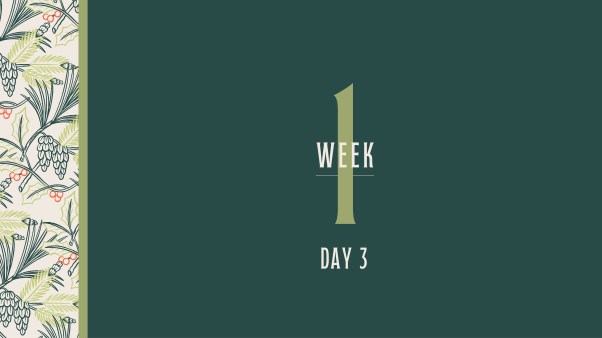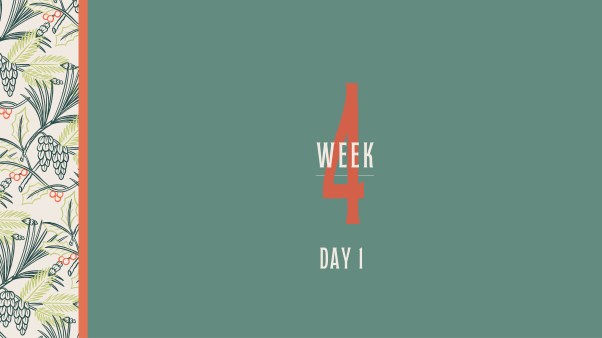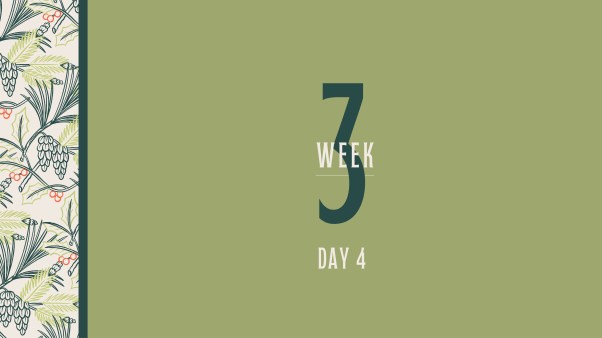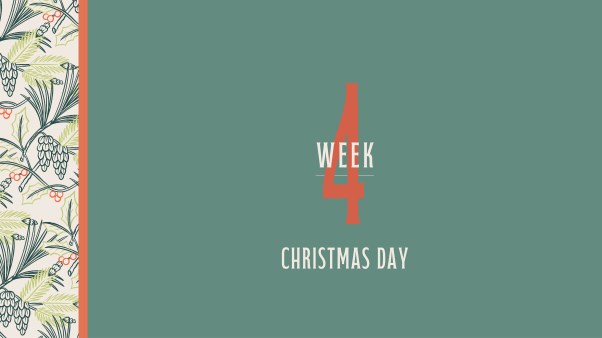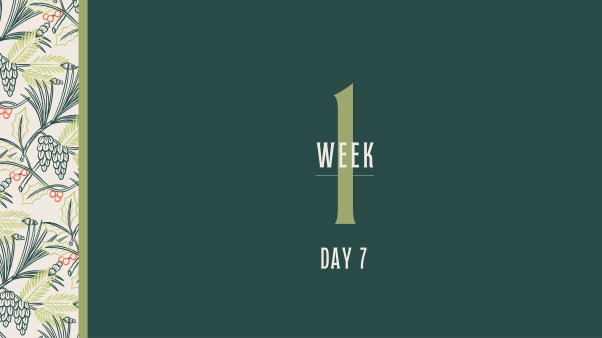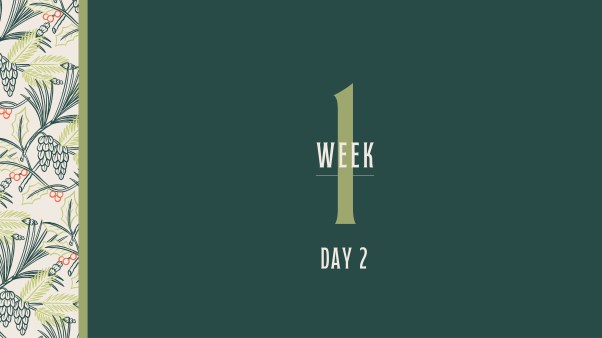 The first time my daughter grabbed a box of cookies out of the pantry, flipped the package round and round, and asked me how many calories were in each one, I laughed it off.
The first time my daughter grabbed a box of cookies out of the pantry, flipped the package round and round, and asked me how many calories were in each one, I laughed it off.
“I don’t know,” I said. “Why do you ask?”
“Just wondering.”
The second time she asked—while reaching for another square of our regular Friday night pizza—an alarm went off. This time she added, “I don’t want to get fat. That’s bad.”
Even as I told her that she didn’t need to pay any attention to calories, that they were good things, that we needed them for energy to run and play, I seethed. After all, I had a new enemy: whoever had introduced this calorie nonsense into my home and had made my healthy, vibrant 7-year-old worry about counting calories.
As it turns out, naming the enemy was more difficult than anticipated. Even as I read a horrifying (if overblown) story about the number of 5- to 7-year-olds who are being treated for eating disorders in the UK, I couldn’t simply blame the media, Barbie, or the uber-retouched, sickly skinny celebs on magazine covers the way the Telegraph report did. After all, how could a thin woman in a magazine cause my daughter to dread getting fat?
But I was wrong. While loading food onto the conveyor at the grocery store, I saw her. On a magazine cover. In her pretty dress and sweet cardigan, ankles crossed ladylike on a picnic table set with apples in their summer glory.
I reached for the August issue of Better Homes and Gardens. “Fresh and Healthy: Michelle Obama,” the cover read. At last I had found the culprit: one of the world’s most beautiful, powerful, and intelligent women. Great.
If you don’t know, Michelle Obama’s major initiative during her husband’s presidency has been the Let’s Move campaign, which aims to end childhood obesity within a generation by encouraging healthier eating and activity “during their earliest months and years.”
While well-intentioned to be sure, something about it strikes me as insidious.
Perhaps because even as Let’s Move seeks to “raise a generation of healthier kids,” it’s a government program that targets kids: namely, fat ones. As the message of Let’s Move and other programs like it has trickled down through layers of government bureaucracy into U.S. schools and schoolyards, the dangerous sides of its do-gooder message seep into our homes. It creates problems where there were once none.
My daughter now faces demons she shouldn’t have to face. Not at age 7 at least. Instead of being able to shovel her Mac and Cheese, to slurp down a juice box with abandon before running back out to the swings, she now stops to consider the “costs.”
Instead of greeting her food with gratitude, thanking God (or even me) for the energy it gives her to run outside and ride her scooter, she’s asking questions about why fat people are so unhealthy. Why they are “bad.”
Certainly 7-year-old girls asked their mothers about calories before anyone knew Michelle Obama’s name, but programs like hers only validate all the retouched, dying-to-be thin images we see in visual media every day. It reinforces the wrong-headed belief that overweight people are less worthy, that their lives mean less than thin ones, that they should be eradicated for the public cost they create for the country.
As Paul Campos noted in the Daily Beast, “Fat kids have enough problems without government-approved pseudo-scientific garbage about how they could be thin if they just ate their vegetables and played outside more often.”
Thin kids do too.
Don’t get me wrong: I want both kids and parents to know where food comes from and to understand serving sizes. I want people to feel their hearts pound, their muscles burns when we engage in life that lifts us out of our desk chairs or off our sofas. I want people—children, especially—to be healthy and fit.
And I understand the dangers and complexity of childhood obesity. I just worry about the dangers presented in our desire to eradicate it. About what these efforts communicate to all kids, no matter their Body Mass Index. Specifically, I worry that kids understand that our fight against childhood obesity is less about being healthy and more about not being fat.
I worry, as a recent AP story warned, that we are making overweight kids even more of a social pariah than they already are. We are, after all, seeking to make them extinct. Looking at it this way, my daughter’s newfound concern for calories makes perfect sense. It’s simply self-preservation.
As a Christian, I certainly don’t want my kids’ response to food to be one of gluttony or comfort-seeking. But nor do I want food of any kind to be met with panic. I want my kids to care about their health, but not cross over into obsessive control over it. I don’t want my 7-year-old daughter—who has a lifetime to fret over her figure—to start now. And I don’t want anyone looking at overweight or obese kids as anything lesser, as people to be gotten rid of.
I want my kids to know that food is a gift. I want all our kids to be grateful to God and to parents for the provision they receive, even if it is at times less than perfectly healthy. And I want them to know that they are loved by a God whose body was broken for us: no matter how they look or what they weigh.
Catholic League president William Donohue has been dissing the upcoming Angels & Demons–the prequel to The Da Vinci Code–for a couple of months now, claiming the film to be a “smear” on the Catholic Church. For the most part, the filmmakers have taken the high road and remained silent.
No longer. In a measured but strongly-worded op-ed today in The Huffington Post, A&D director Ron Howard responds by saying that Donohue should essentially zip it till he sees the movie.
Howard writes that Donohue “is on a mission . . . to paint me and the movie I directed, Angels & Demons, as anti-Catholic . . .
“Let me be clear,” Howard continues. “Neither I nor Angels & Demons are anti-Catholic. And let me be a little controversial: I believe Catholics, including most in the hierarchy of the Church, will enjoy the movie for what it is: an exciting mystery, set in the awe-inspiring beauty of Rome. After all, in Angels & Demons, Professor Robert Langdon teams up with the Catholic Church to thwart a vicious attack against the Vatican. What, exactly, is anti-Catholic about that?”
Donohue has written a booklet, Angels & Demons: More Demonic Than Angelic (available for a $5 donation to the Catholic League), which he said that A&D “details the myths, lies and smears that are made against the Catholic Church [in A&D]. It also provides evidence of the anti-Catholic animus harbored by those associated with the film.
“Author Dan Brown and director Ron Howard are . . . obsessed with Catholicism. It is not enough to criticize it – they are hell bent on demonizing it. It is not enough to drag out dirty laundry – they invent it. And the fact that they pay absolutely no price for their propaganda shows beyond dispute that anti-Catholicism is the one bigotry Hollywood likes.”
 “Write about what disturbs you, particularly if it doesn’t disturb anyone else.”
“Write about what disturbs you, particularly if it doesn’t disturb anyone else.”
That’s the writing advice given to Skeeter, the only single white female and college graduate among her well-to-do white girlfriends who are all married with children. In the small town of Jackson, Mississippi, in the early 1960s, Skeeter reaches out to the African American maids of her so-called friends to speak her truth.
The truth is, one of Skeeter’s best friends, Hilly (a professing Christian and wife of a politician), is a high-minded and demoralizing individual who thinks it is perfectly normal to host a fundraiser for the “Poor Starving Children of Africa” and yet draft an initiative to require that all white families build separate bathrooms for their “help”; in Hilly’s words, “They have separate diseases than we do, and I’m just trying to protect our children.”
The help of which Hilly speaks are the African American maids and lead characters Aibileen and Minny, who spend their entire lives cooking food for white families, cleaning their homes, and looking after their white babies. Hilly is the one who spews the venom of lies and hatred that causes racism to persist. Skeeter and the rejected “white trash” Celia Foote are the bridge builders who take the risk to enter into relationships with the maids and get to know them as people.
Like many other African American women, I was a little apprehensive about reading a book and then going to yet another movie where black people are depicted as victims who need rescuing from the good white folk. Hollywood has followed that tag line with movies like The Blind Side, Save the Last Dance, Amistad, and Radio to name a few. Of course, African American women are equally unexcited about Hollywood’s depiction of yet another maid or “mammy” role.
But this story is different. The Help, Kathryn Stockett’s bestseller, which just debuted in theaters yesterday, is a story about truth, courage, and forgiveness. This is a story about womanhood, friendship, and love.
The truth is those times were hard. That’s what I understand, not from what I have seen in a movie or read in a book, but from the stories of my own mother, the women in my family, my godmothers, and countless mentors who lived during that time. Racism is ugly. Racism is sinful and still plagues our society. It takes courage to admit and then wrestle with that statement.
You see, many evangelicals desire to reach across the aisle and talk racial reconciliation. I truly want to see racial reconciliation lived more consistently in my lifetime, for I believe that the gospel is the message and ministry of reconciliation (2 Cor. 5:18-21). True reconciliation means restoring our relationship with God and each other. If 11 o’clock Sunday morning continues to be “the most segregated hour in America,” we are deceiving ourselves that we are living this reality.
Sure, we have come a long way, but in some circumstances, we are still hindered by folks like Hilly who make assumptions, ask questions but don’t listen, and then draw conclusions based on the small bubble in which they live. Instead of following Hilly’s arrogant lead of asking superficial questions like, “Aibileen, you like your separate bathroom in the garage, don’t you?” we can take Skeeter’s lead and go visit Aibileen’s house. It is at the kitchen table in a home when both of you are vulnerable and uncomfortable that the truth is shared.
That’s what I loved about The Help. It sends a powerful message that reconciliation does not happen primarily through speeches, books, diversity initiatives, or training and it should send a clear message to the church that reconciliation cannot happen with programs, goals, “special” services, and activities. Reconciliation is the result of intentionally building intimate relationships, one day at a time, with one person at a time.
I challenge readers to start here: take a look at your phone contact list and e-mail contacts. How many people are from a race or ethnicity different from your own? What kind of people have you invited to your dinner table over the past year?
We have a long turbulent history of racial injustice in this country, but I believe the words of Dr. Martin Luther King Jr., who said that “what self-centered men have torn down, men other-centered can build up.” God calls us to be other-centered. The love of Jesus is other-centered, which is why he engaged the Samaritan woman, allowed Mary of Bethany (a woman) to sit and learn at his feet, and ate with the tax collectors and sinners.
The gospel says that we all need help. The help that God provides gives us courage to tell the truth, love our enemies, offer forgiveness, and be the image bearers that he created us to be. That’s what Minny and Celia, Skeeter and Aibileen share with us. That’s a story of hope.
Natasha Robinson is a member of Cornerstone Baptist Church in Greensboro, North Carolina, and a full-time student at Gordon-Conwell Theological Seminary. She enjoyed both the book and the movie. Check out her blog, A Sista’s Journey where she featured a post entitled I Go to Church With White People. Also find her on Twitter @asistasjourney. She has written for Her.meneutics about Beyonce’s Wrong Message of Girl Empowerment and Modesty in the Church.Camerin Courtney reviewed the film version of The Help for sister site CT Movies. Sarah Pulliam Bailey reviewed the book for Her.meneutics last spring.
Howard says Donohue needs to lighten up and recognize a work of fiction for what it is: Just fiction.
“Mr. Donohue’s booklet accuses us of lying when our movie trailer says the Catholic Church ordered a brutal massacre to silence the Illuminati centuries ago,” Howard writes. “It would be a lie if we had ever suggested our movie is anything other than a work of fiction (if it were a documentary, our talk of massacres would have referenced the Inquisition or the Crusades). And if fictional movies could never take liberties with reality, then there would have been no Ben-Hur, no Barabbas, The Robe, Gone With The Wind, or Titanic. Not to mention Splash!
“I guess Mr. Donohue and I do have one thing in common: we both like to create fictional tales, as he has done with his silly and mean-spirited work of propaganda. “
Howard concludes with these words: “I know faith is believing without seeing (and a boycott would be disbelieving without seeing). But I don’t expect William Donohue to have faith in me, so I encourage him to see Angels & Demons for himself. Then he will finally witness, and perhaps believe, that what I say is true.”

